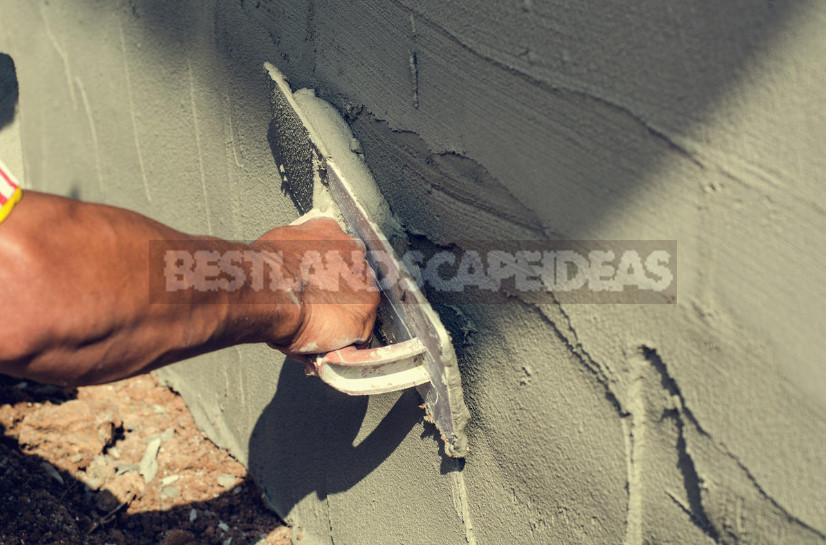
Against the background of abundance of offers on finishing materials for facades one of the most traditional ways of creation on a wall of a protective and decorative covering — plastering. Perhaps someone will find it archaic and ineffective. But according to unofficial statistics-the opinion of those who build, for every third house in low-rise private construction as a facade finish is used plaster.
What is a plaster or “wet” facade
Plaster is a layer of hardened plaster applied in a plastic state to the surface in several stages (depending on the thickness of the layer) with compaction and smoothing. A layer of plaster evens the surface of the walls. Applied a fairly thick layer, it also serves as an additional insulator of the facade, making the house warmer in winter and cooler in summer.
Characteristics of a plaster covering depend on structure of a solution: its layer can be vapor-permeable, that is a surface under it “breathes”, and at the same time very strong and have excellent waterproofing characteristics. And besides, plaster opens vast possibilities for decorating.
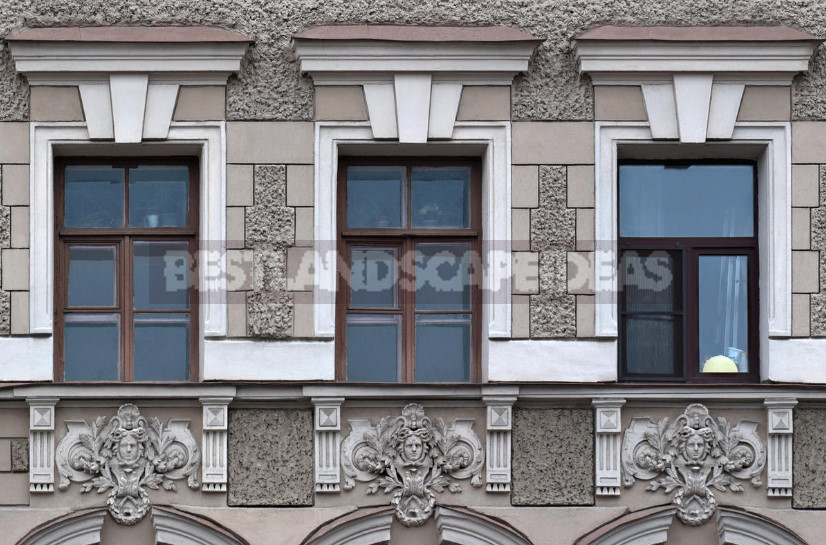
One of the positive qualities of this material — the ability to create a seamless coating over the entire area directly related to the base. There is no need to introduce various fasteners that create areas with different heat capacity parameters (“cold bridges”). Applied without violations of technology, plaster for a long time retains all its qualities, protecting the design of the walls, warming the building and decorating it.
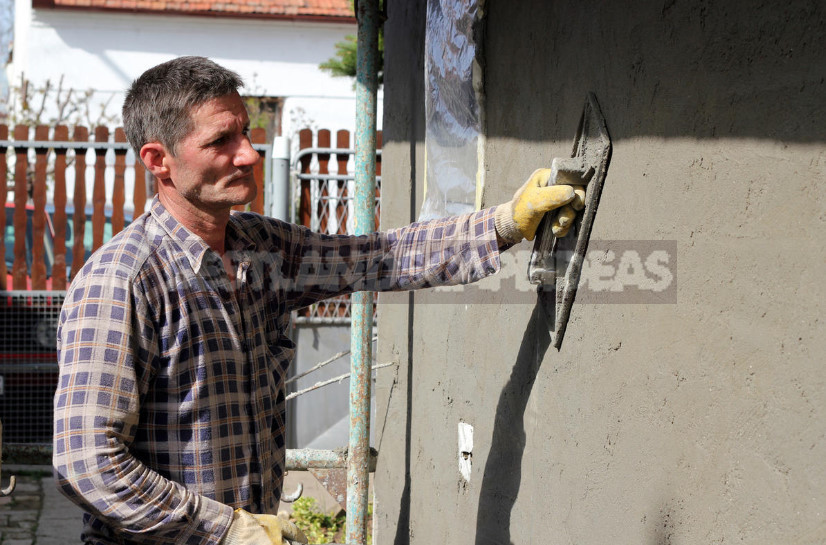
The modern types of facade plasters
All types of plaster mixes available in the construction market are divided into three large groups.
- Usual. The main purpose — alignment and protection of surfaces from external influences.
- Decorative. For finishing – creating a beautiful coating.
- Special. Their purpose – also protection, but not from ordinary rain or snow, and from the increased penetration of water (waterproofing), thermal and sound insulation, from mechanical action (reinforced) and even from the influence of radiation.
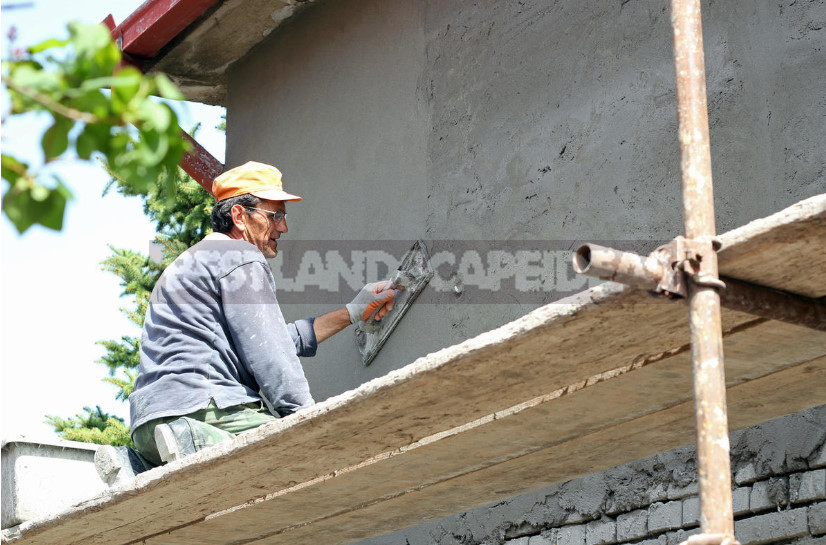
Also plaster formulations differ in the type of binder.
Cement, cement-lime and lime
The most common and inexpensive customary facade plaster based on cement. It fully meets all the requirements for the coating of facades. Lime plaster is also suitable for outdoor work, but they are less strong and moisture resistant compared to the cement-based solution.
To increase the plasticity of the cement-sand solution, lime is added to it. And that lime plaster became more strong and moisture — resistant-cement. The result is a compromise solution: durable and moisture-resistant coating and easier to work solution-cement-lime plaster.

Today comes a lot of options for the finished dry mixtures based on cement and lime, and introduced in their composition plasticizers improve the performance of the plaster layer and facilitate its application.
Earthen
In the Wake of the popularity of green building in modern homeowners there is an interest in traditional, but in recent years is not too common material for plastering facades — clay.
In the natural clay solution, in addition to clay, there are natural additives-ash, coal, cut straw or sawdust. As natural plasticizers used fermented infusion of grass, horse manure, urine and blood of animals, whey.
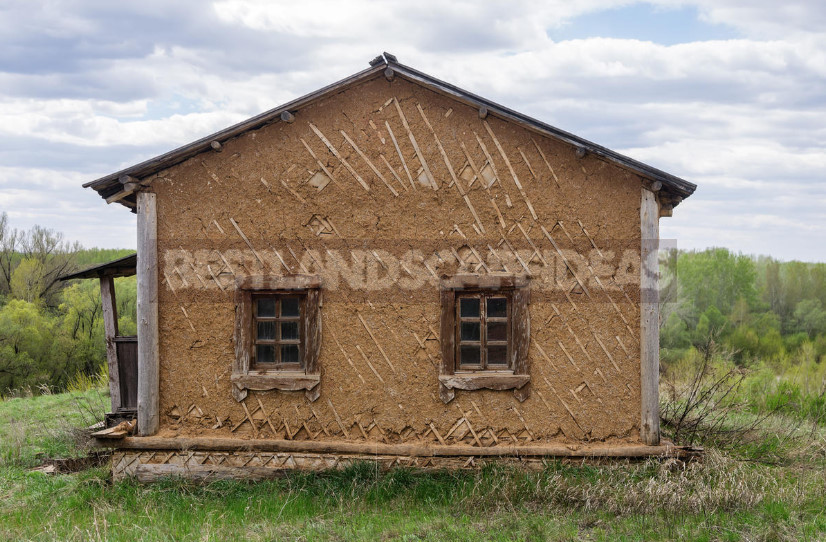
For those who care about the environmental safety of their homes, natural plaster can be bought as well as the usual — in the form of a dry mixture. It already contains all the necessary and natural additives and plasticizers that make clay moisture resistant. Therefore, the house with a facade, plastered with natural material, is not afraid of rain and can be built not only in traditional Adobe construction regions with dry and hot climate.
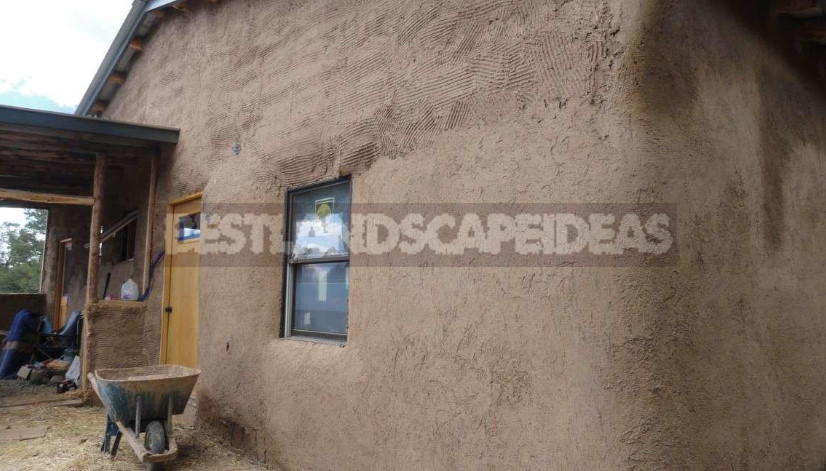
Acrylic, silicate, silicone
In assortment of plasters for a facade there are also modern solutions. It is a silicate, polymer and silicone plasters. These types of finishing materials give the facade greater resistance to water, create a dirt-repellent film on the surface of the wall, prevent cracks.

Although they are called “plaster”, but at its core-thin-layer finishing coatings related to decorative. They are applied to the prepared base — the surface of the walls, which is leveled using conventional cement-sand mixtures.
The plaster is firmly, securely and beautifully
Polymer facade materials have appeared relatively recently. But decorative coatings with texture, as well as many other options decorated the walls of houses much earlier. In the traditional technology of applying textured plasters in the first place is the basis-aligned irregularities of the wall and creates the desired layer of cement-sand mortar.
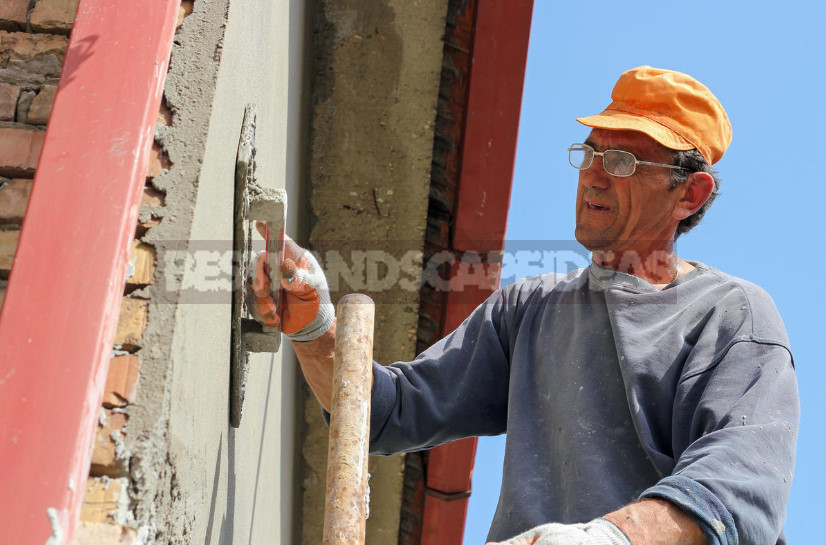
At first do spray-throw on a wall a liquid plaster solution and allow it to dry. Its task is to penetrate the seams and cracks or mesh and create a good grip on the wall. Then put a plaster layer, level it on beacons a rule and condense.

The last layer is applied to the already seized, but not completely dried soil. The coat layer has a thickness of 2-4 mm. It is applied with a composition of creamy consistency, prepared on the fine sand. Often for finish coat using lime-based mortars are more plastic like.
After setting, the surface is gently rubbed. Carefully made grout of the last layer creates a smooth surface, resistant to water and ready for painting.

At creation of a decorative covering the last layer of plaster is replaced with drawing of the invoice. In a plaster solution for a textured layer add dyes, stone chips.
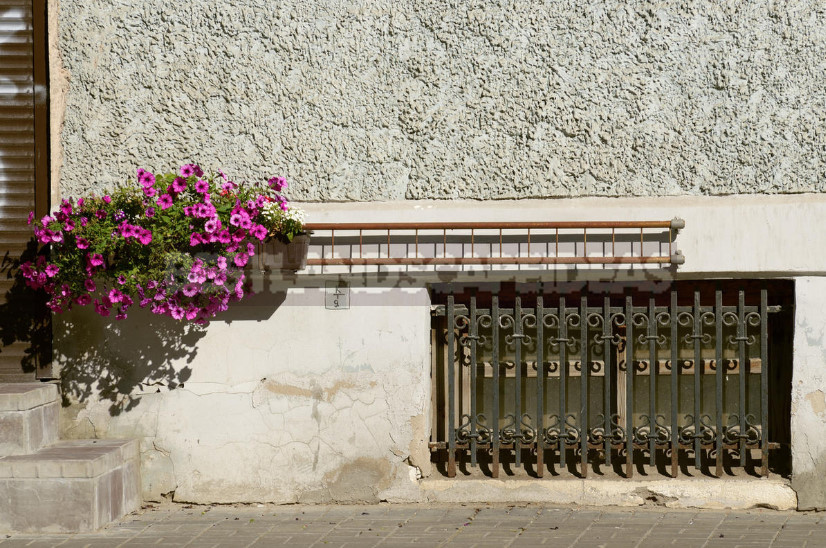
A similar texture can be obtained by rolling a fresh layer with a roller. On plastic plaster it is possible to create various patterns and textures by means of a spatula, relief rollers, stamps and other tools.
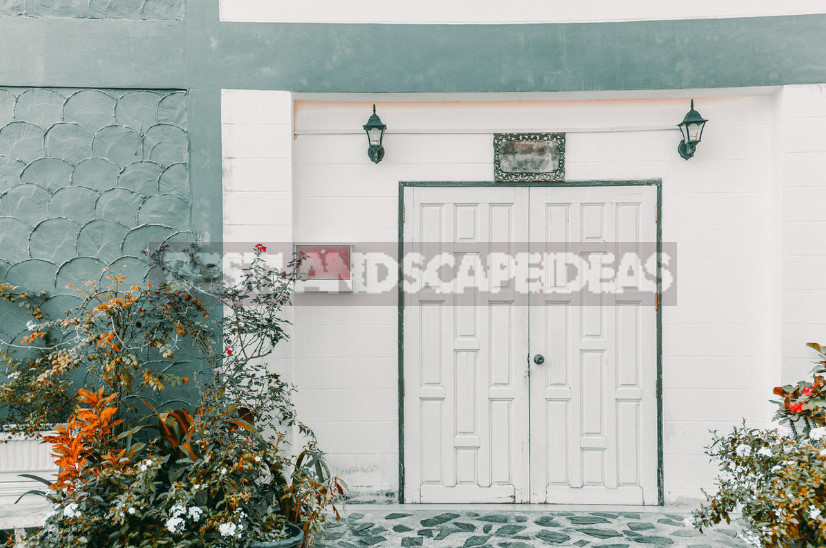
You can also simulate a stone surface. For this purpose, terrazitic plaster — lime mortars filled with stone chips (10% solution).
On the surface of the plaster composition after setting is applied to the contours of the masonry, cut the stitches. After final hardening the surface of “stones” is processed mechanically.
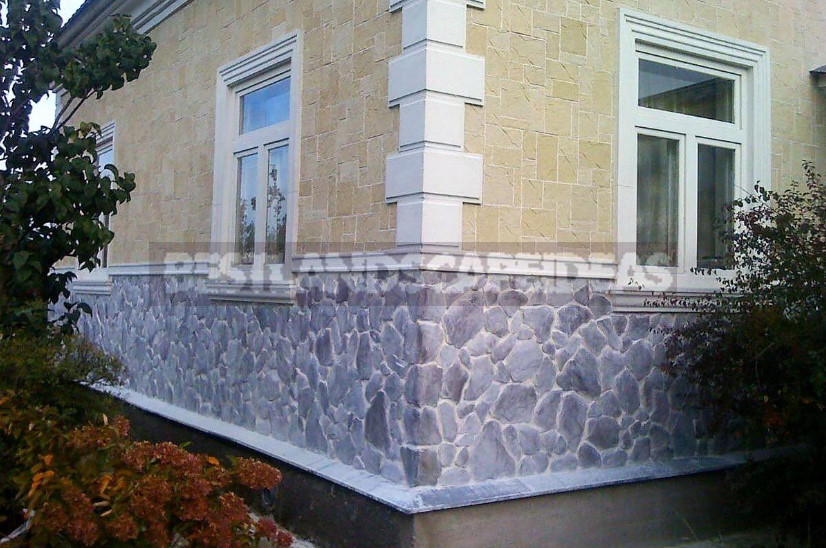
In addition to the application of decorative textured plaster on the entire area of the wall, the facade can be decorated with architectural elements, also made of cement-sand and lime mortar. Profiles “pull” specially made spatulas-templates.
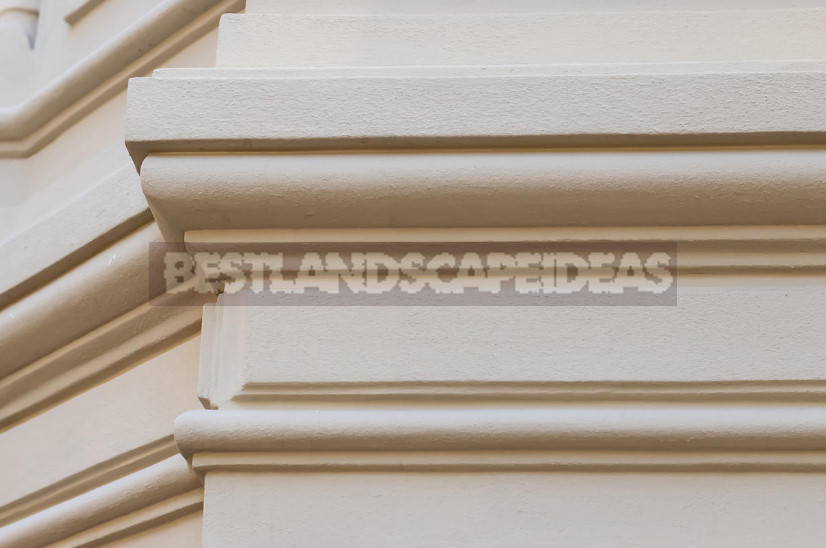
Plaster facade-a great option for finishing the walls of the house. From the variety of ways you can choose the surface design for any style. Plaster will become an equal partner or background for other types of facades.
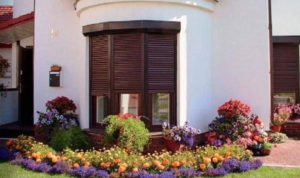



Leave a Reply